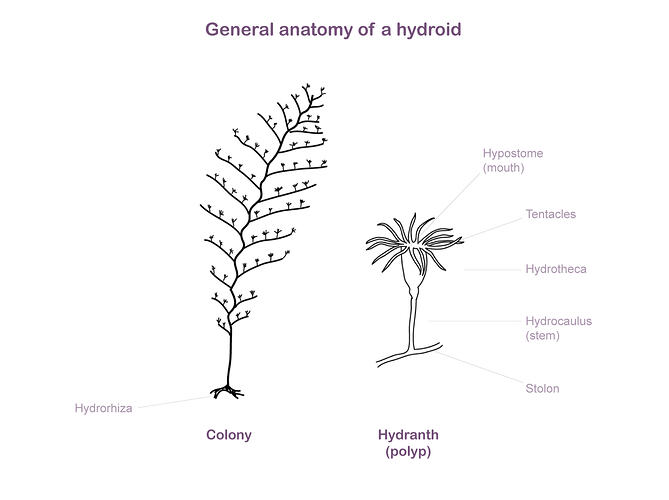General Description
Irregularly branched. Hydranths (individual polyps) pinkish with tentacles white but generally appear uniformly buff coloured from their covering of agglutinated particles. Specimens from deeper water are more uniform pink in colour than those from shallow water. Stems and branches may appear ringed or wrinkled, sometimes smooth in individuals from deeper water. Gonophores (reproductive structures) white.
Biology
This species is often heavily coated in foreign matter on and below the hydranth (individual polyp) as well as on the proximal half of the tetacles. They rarely have nematocysts.
Distribution
Western and southern Australia (South Australia, Tasmania, Victoria, Western Australia).
Habitat
Subtidal, epizoic on bryozoans, ascidians, sponges and other benthic fauna.
More Information
-
Animal Type
-
Animal SubType
-
Brief Id
Branched, pinkish under agglutinated particles but appearing buff coloured.
-
Habitats
-
Diet
Plankton or Particles
-
Diet Categories
Plankton
-
Hazards
Generally not harmful but still able to sting bare skin.
-
Endemicity
-
Commercial
No
-
Conservation Statuses
DSE Advisory List: Not listed, EPBC Act 1999: Not listed, IUCN Red List: Not listed
-
Depths
Shallow (1-30 m)
-
Water Column Locations
On or near seafloor
-
Taxon Name
-
Scientific Author
Blackburn, 1937
-
Common Name
Hydroid
-
Phylum
-
Class
-
Subclass
-
Order
-
Family
-
Genus
-
Species Name
australis

